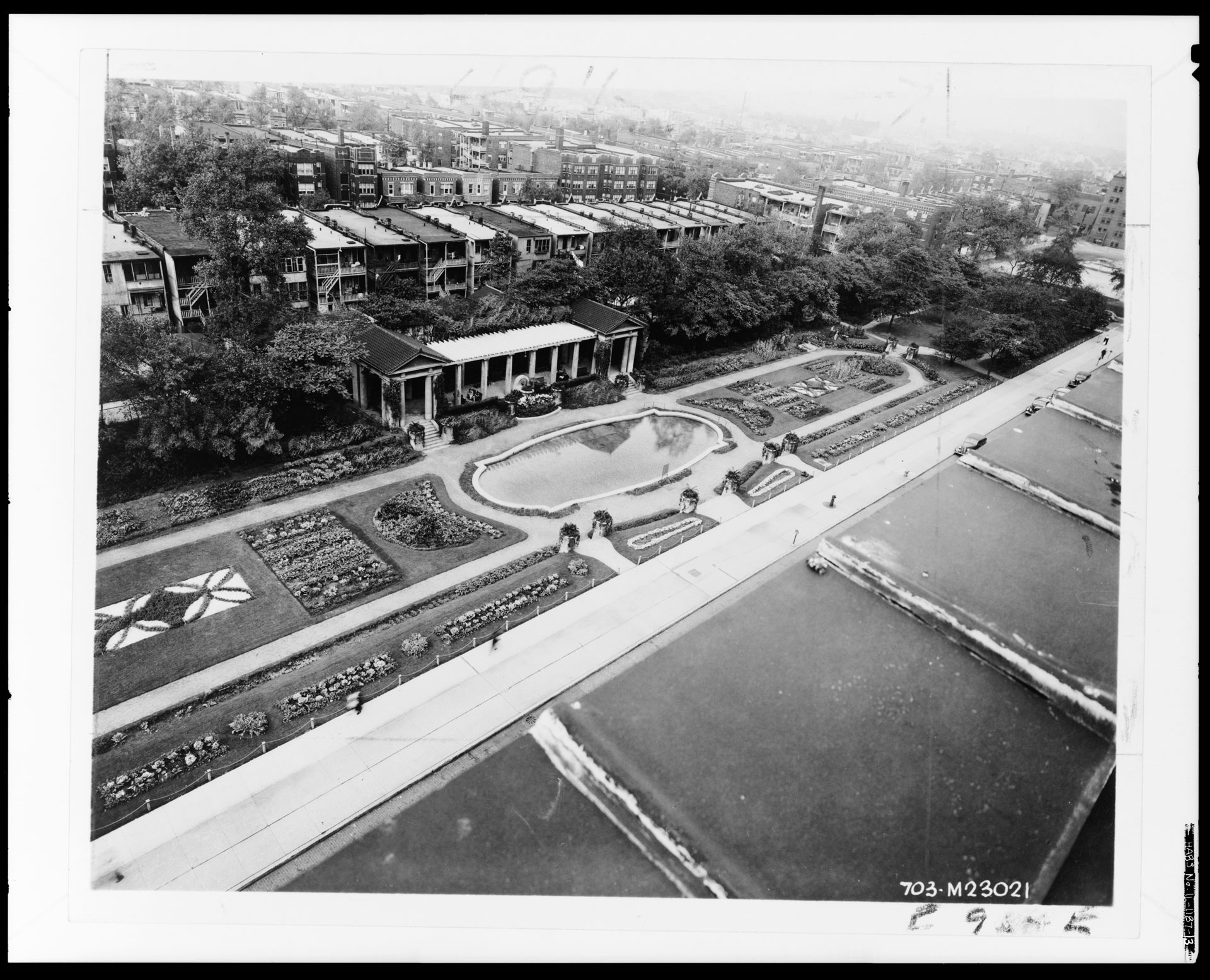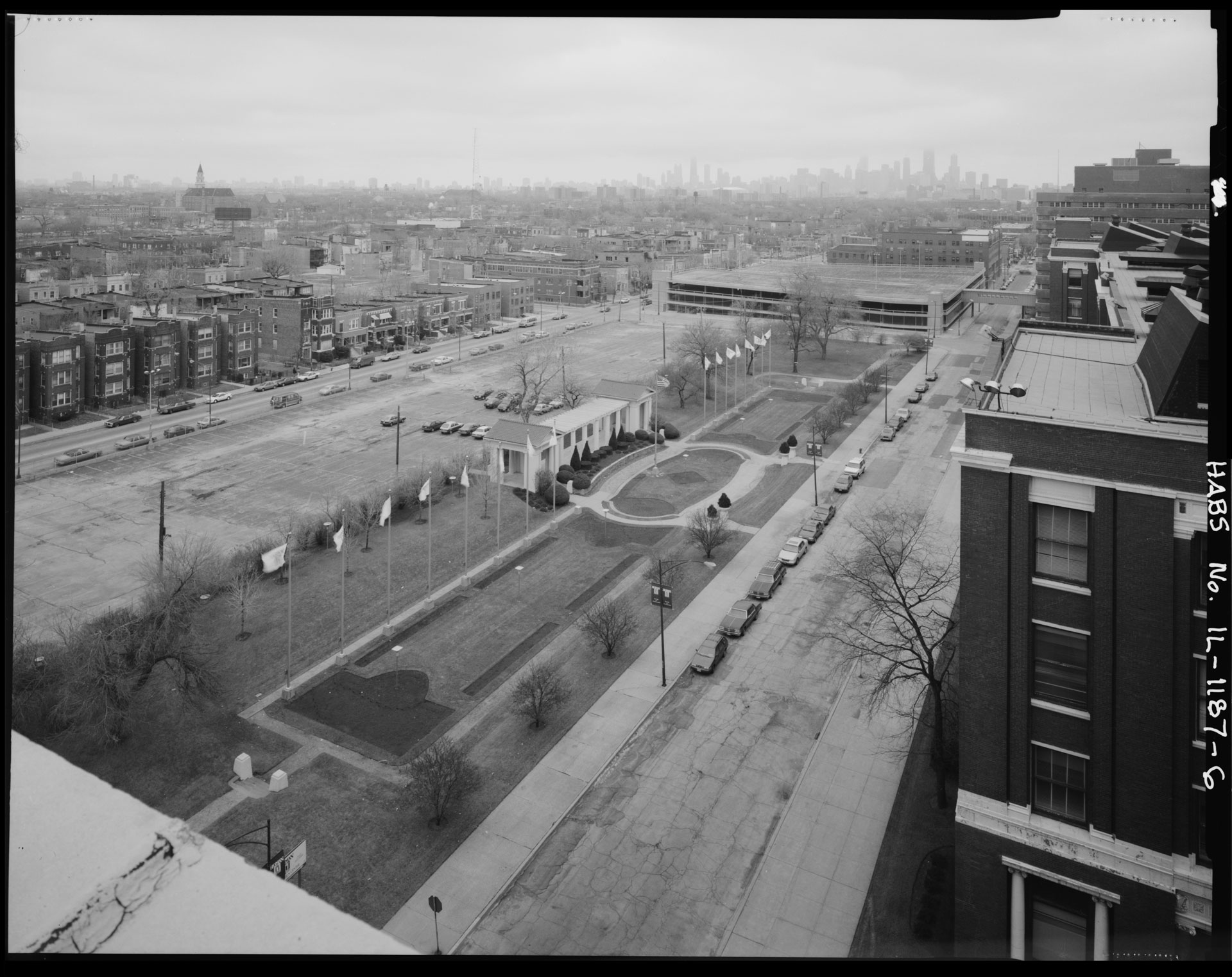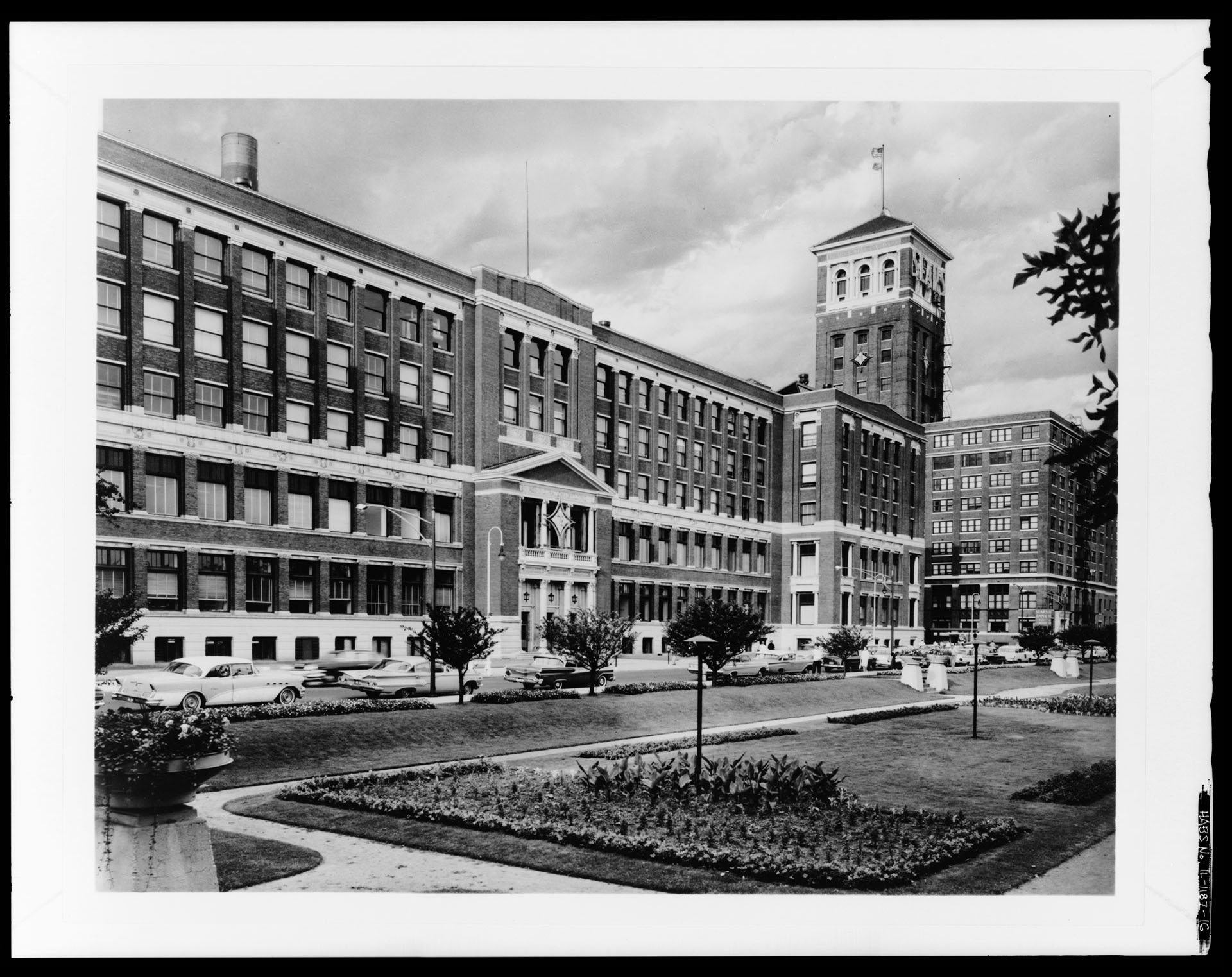Completed in 1907 as a respite for the employees of Sears, Roebuck and Co., the Sears Sunken Garden is a Chicago Historic Landmark.
In 2018 the North Lawndale Community Coordinating Council’s (NLCCC) Quality of Life plan called for the repair and maintenance of the historic and publicly accessible outdoor spaces within the community. The NLCCC’s GROWSS Committee (Greening, Open Space, Water, Soil, and Sustainability) began exploring possibilities for renovating the Historic Landmark Sears Sunken Garden. In 2021, Friends of Sears Sunken Garden (FSSG), a 501c3 organization, was established to restore this historic garden. The transformation of the iconic Sears Sunken Garden will highlight North Lawndale’s ambition for a green future, and will continue this journey of revitalization.

Sears headquarters opens in the west side.
It was in 1907 that Sears, Roebuck and Co. opened its headquarters in the west side of Chicago, the community now known as North Lawndale. The Sears campus was designed by Nimmons & Fellows. Architect George C. Nimmons was an early 20th century expert in industrial architectural design, and a master at combining Chicago School principles with Classical and Prairie-style ornament. The 40-acre Sears campus was an ensemble of commercial and industrial architecture, and landscape design.
The centerpiece of the garden is its neoclassical pergola, with wood beams supported by colonnades of Doric columns, balanced at each end by two Doric temple pavilions with red-clay tile roofs.
In the 1970s, Sears began pulling out of the west side, first by relocating its corporate headquarters to the Sears Tower in downtown Chicago, then by closing its warehouses and distribution centers at the North Lawndale campus in the 1980s. The area struggled economically, and many were left unemployed. The Sears Sunken Garden began to fade.


A new energy and community spirit.
In recent years under community leadership, the former Sears campus is being redeveloped, and the historic buildings are being repurposed. The sunken garden will be restored to celebrate its historic importance and serve as a gathering space in the community. The centerpiece of the garden is its classical-inspired pergola, located across from the original Sears Administration Building and symmetrically aligned with its main entrance. The pergola remains intact, as do the garden’s original concrete planting urns that mark entrances to the garden. The sunken garden is the only surviving outdoor activity space of several designed by Nimmons & Fellows.
Historical images courtesy of the Library of Congress
